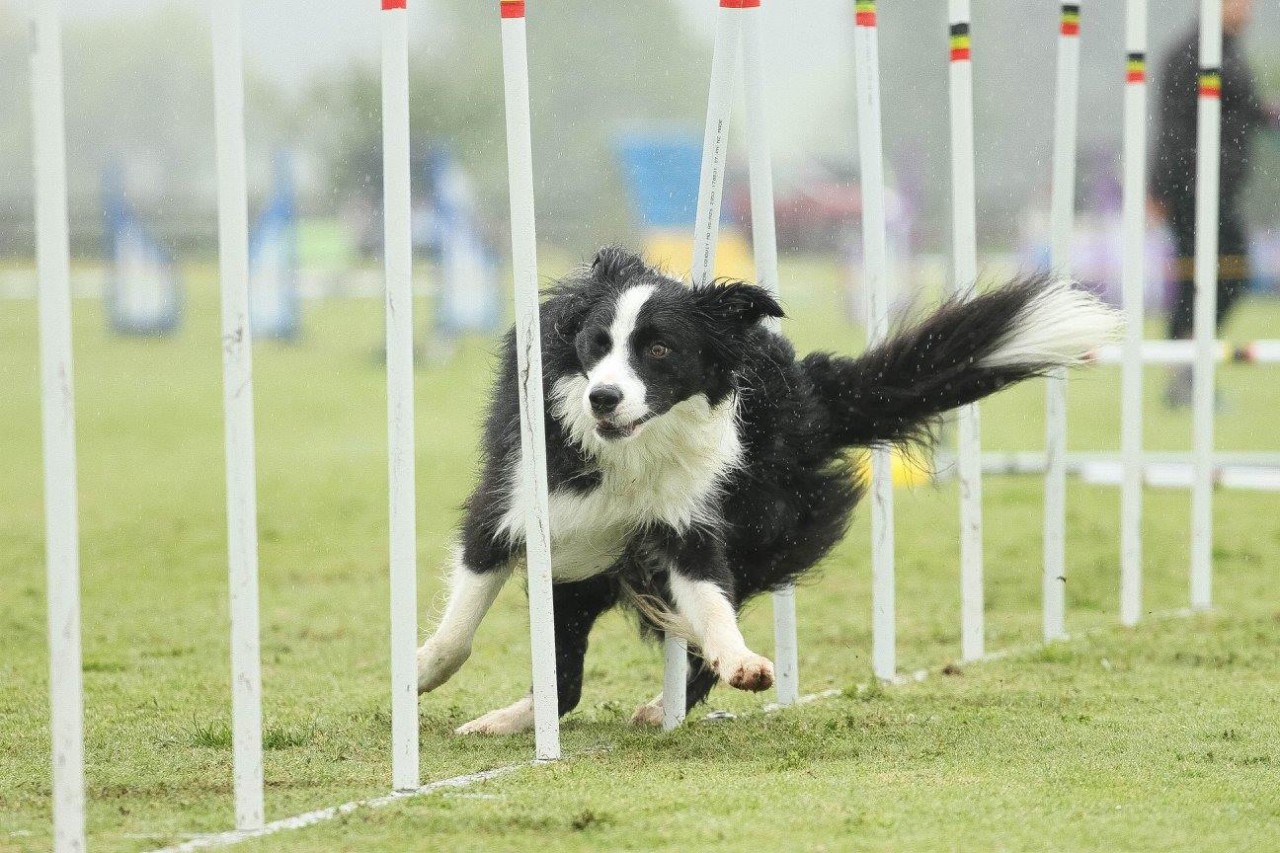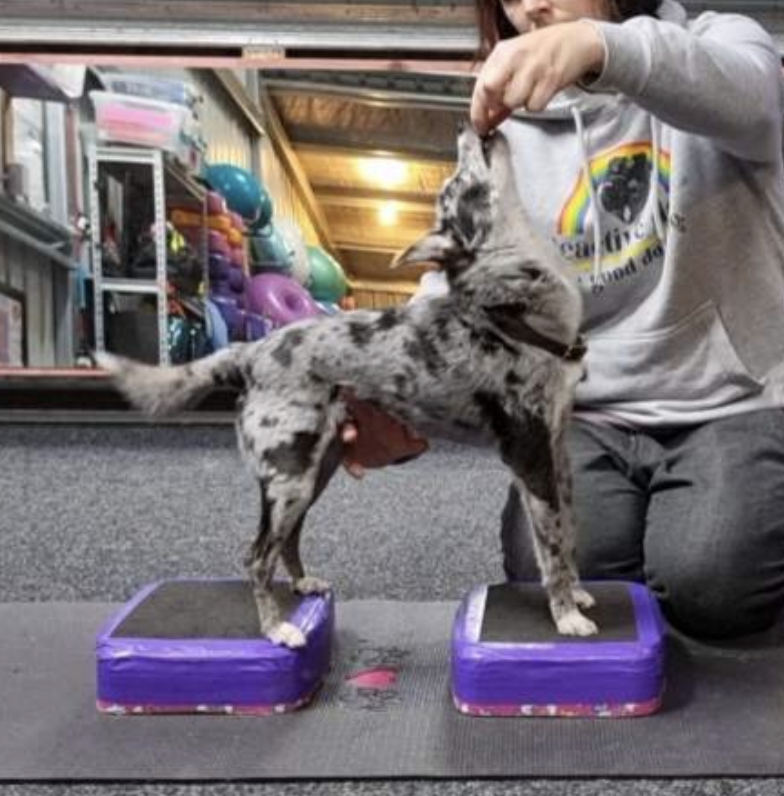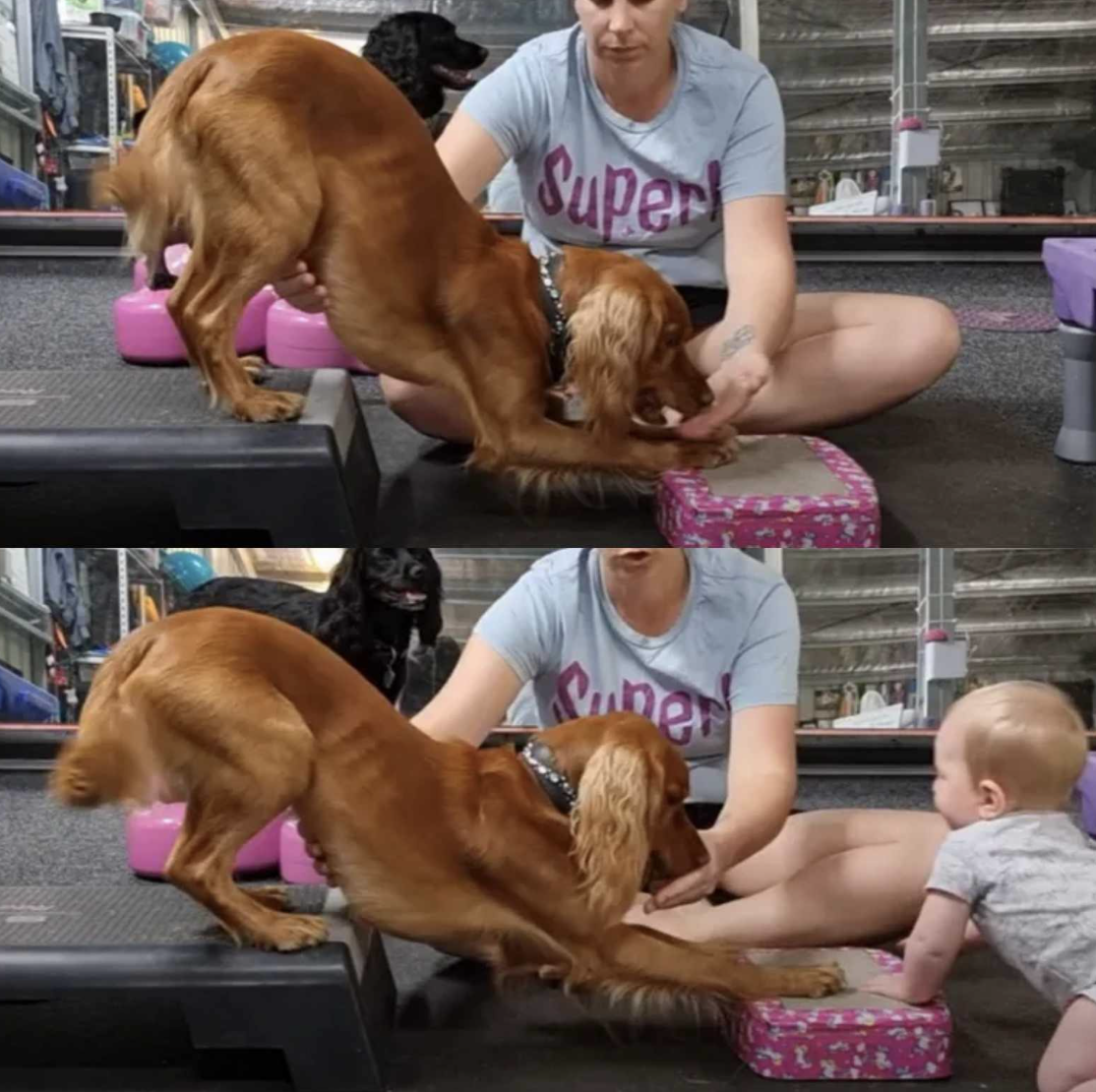What is flexibility, and why does it matter?
Flexibility is the ability of muscles (and muscle groups) to lengthen and move a joint through range of motion. Mobility is the ability of a joint to move through range of motion. Movement is a complex marriage of biology: joints, ligaments, tendons, muscles, neurological input and control, pain, medical conditions and medications, and behaviour. So it's important that we are aware of all the different things that can impact movement.
Here's the thing — without flexibility, and strength, bodies are not good at mobility! To move fluidly to the end of a range of motion for a joint the muscle has to comfortably lengthen to it's full extension, and then needs the strength, power, and control to shorten and create flexion.
Flexibility can be a gamechanger for sports dogs, both in the positive aspect and the negative. A dog that vastly lacks flexibility can have a huge impact on being physically able to perform some movements and skills. A dog with too much flexibility can get sore, and easily injured as the joints lack support.
Think about our sports skills. These are complex both in terms of learning and understanding, but also biomechanically what our dogs need to do with their body.
Strength & Flexibility for Weave Poles
Evo weaves:
Weave poles are a prime example of mobility: a high degree of flexibility is required, and muscle strength for both the movements to occur and the mobility to move through the required range of motions. As a dog enters the weave poles they need to weight shift backwards to decelerate which requires core strength, and then lift the fore limbs up in flexion, before abducting/adducting the limbs out to the side, then moving them into extension as they power forwards. This is accompanied with the head, neck and spine having to twist laterally (to the side), and the hind limbs moving through flexion and extension to power forwards from the rear end. This involves all joints working through range of motion, as well as a high degree of muscular stability and power required.
Is this neck ROM normal?
What's important is to know your dog's normal in their flexibility and mobility, and regularly check this to make sure there are no drastic changes. We can check, and try to improve mobility with stretching. There are different ways that we can do this, including passive stretching (when you stretch the dog), active stretching (when the dog controls the stretch), and dynamic stretching (where the dog controls the stretch in rhythmic movements that also build muscle and stability). Generally it is acknowledged that passive stretching is not recommended, and active or dynamic stretching is recommended.
Here Grid is doing a regular bow, and an extended bow to stretch the shoulders, upper back, and chest more thoroughly.
Want help with flexibility and mobility? Check out my upcoming workshop 'Bend and Stretch' starting on the 3rd of March.
Need to build strength and muscle? 'The will to Workout' workshop series continues on the 14th of April with Workout 2 (a complete workout including strength exercises).
By accepting you will be accessing a service provided by a third-party external to https://www.fenzidogsportsacademy.com/


